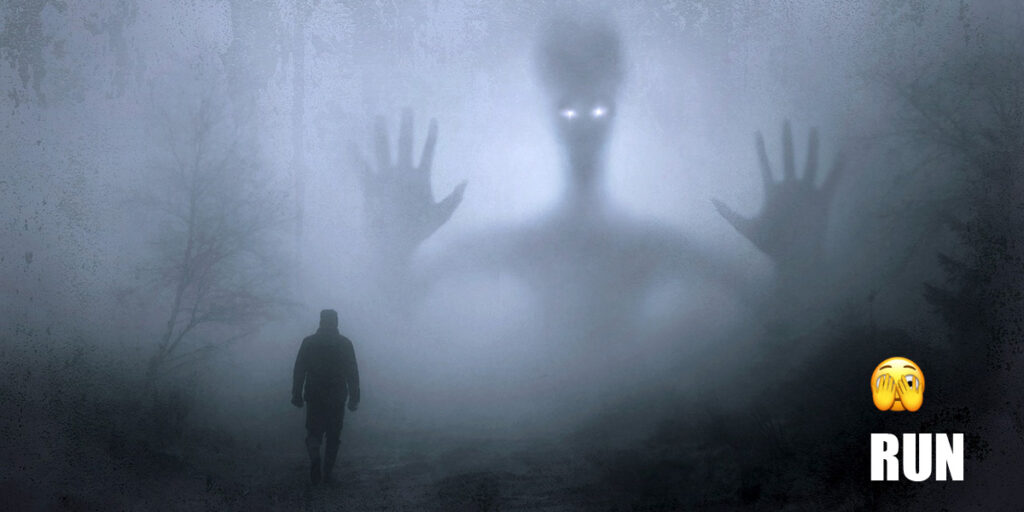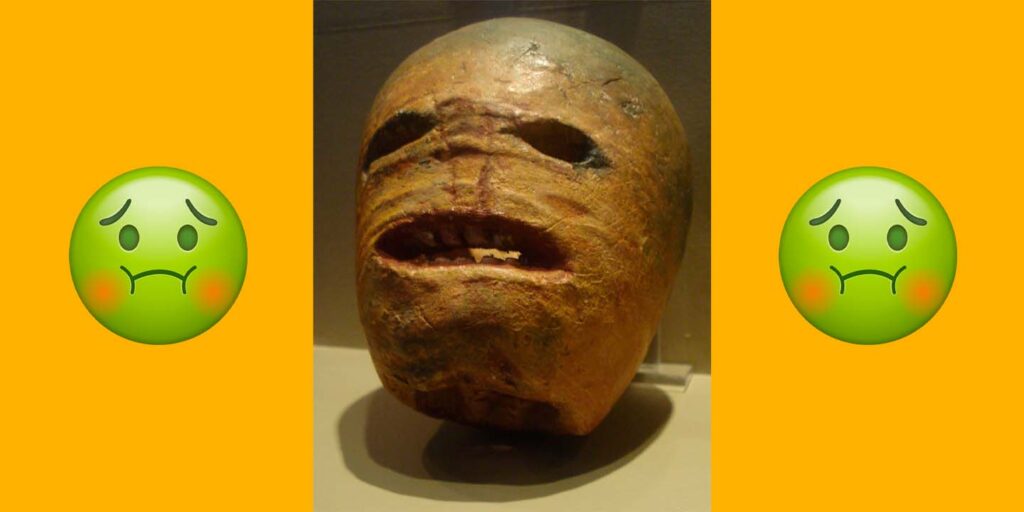It is believed that Halloween was invented by the Celtic people who lived primarily in Ireland approximately 2,000 years ago. The modern Halloween had its roots in the pagan celebration of Samhain.
The purpose of Samhain was to mark the division of the year from the light (summer) to the dark (winter). It symbolised the loss of the strong sun, and the journey to the underworld.
During this period, the Celts believed that the veil between world was at its thinnest.
Ancestral spirits were welcomed into family homes, while harmful spirits were deterred. As a way to protect oneself from these malevolent spirits, the Celts wore primitive costumes and masks as a disguise.
As part of the Samhain festivities, bonfires were lit (including at Tara and Tlachtga, near the town of Athboy in County Meath, Ireland) and feasts were attended.
Because this festival was so popular among the pagan peoples in ancient Ireland, it is theorised that the celebration was incorporated into Christian celebrations, including All Souls Day which was commemorated by Pope Gregory III in the eighth century.
Hundreds of years later, Irish and Scottish immigrants brought the tradition to America, where it eventually evolved into the modern Halloween celebration that we know and love!
What is Samhain?
Samhain (pronounced “soww-in”) is an Irish word that means “summer’s end.” It comes from two Old Irish words, the word “sam” meaning summer, and the word “fuin” meaning end.
The origins of Halloween can be found in the ancient festival of Samhain, which was celebrated by the Celts in Ireland over 2,000 years ago.
The Celtic people believed in multiple gods and their faith was primarily based on nature (e.g., the woods, the sea, etc.). They held a number of ceremonies during the farming year, including Imbolc (February 1st), Bealtaine (May 1st), Lughnasad (August 1st) and Samhain (October 31st).
As well as wearing costumes made of animal skins and scary halloween masks, the Celts also had other Samhain rituals. These included:
- Pagan dumb suppers
- The witches’ sabbath
- Telling ghost stories
- Fortune telling
Why do people wear costumes on Halloween?
The practice of dressing up and donning elaborate Halloween costumes during Halloween is an integral part of the celebration.
Halloween costumes allow people to transform themselves into fantastical characters, whether they choose to be a wicked witch, a mischievous vampire, or a gallant superhero.
While the Celts used animal skins and body parts as part of their costumes, in the last 100 hundred years or so, they looked a lot more familiar. Check out some costume inspiration from the 1900s.
The concept of dressing up on Halloween night, however, can be traced back to ancient Irish Celtic traditions (like so many of the worlds other great things including FunPlace.ie 🙂
Why do we say ‘trick or treat’ on Halloween?
The tradition of saying “trick or treat” on Halloween has its roots in the ancient festival of Samhain. As the festival evolved over time, it transformed into All Souls’ Eve and All Souls’ Day.
During the Middle Ages, instead of gathering around bonfires as part of the celebration, people started going from house to house during the night. If they were fortunate, they would receive sweet and steaming “soul cakes” at the door.
The origins of soul cakes have different explanations. One theory suggests that they were baked for the bonfires as a kind of lottery, where choosing a burnt cake meant being the human sacrifice to ensure a bountiful harvest in the following year.
Another belief is that the cakes were scattered in an area to appease evil spirits, who were condemned to wander in animal form.
By the 8th century, the cakes had taken on a more religious significance. They were used to compensate beggars who visited on All Souls’ Eve and offered to pray for the family’s deceased.
Giving one cake meant saving one soul, which was seen as a small price to pay.
In other regions, soul cakes were given to costumed performers known as mummers, who entertained people during Halloween.
It is believed that today’s trick-or-treaters are descendants of these mummers, carrying on the tradition of going door to door in costumes and asking for treats.
Today, getting dressed up in costumes and going trick or treating door to door is one of the best ways to celebrate Halloween!
Is All Hallows’ Eve the same as Halloween?
Yes, both terms refer to the same date. Let’s look closer at the meaning behind these phrases.
The word “Halloween” comes from the phrase “Hallow’s E’en,” which is an old way to describe the evening before Hallow’s Day. The word “hallow” is an old word meaning holy.
All Saint’s Day (which took place on November 1st) was also known as “All Hallow’s Day.” Therefore, the word “Halloween” is a fusion of old English words that describe the date of 31st October.
The term “Halloween” itself has its roots in the Christian holiday of All Hallows’ Eve. All Hallows’ Eve was the night before All Saints’ Day, a day to commemorate the saints and martyrs.
It was believed that on this night, spirits and ghosts roamed the earth (not wearing Halloween costumes but definitely looking the part and very scary).
To protect themselves from these wandering souls, people would dress up in Halloween costumes and light bonfires to scare them off…nothing like an Irish bonfire to really put the willies up you.
I wonder did they throw the odd car tyre on it like in Dublin today!?
Is Halloween an Irish tradition or an American tradition?
The tradition of Halloween immigrated from Ireland to North America in the 19th century, brought by Irish immigrants fleeing the Irish Famine (which was far worse then any ghosts).
For example, we introduced customs like the Halloween traditions of dressing up and going door-to-door asking for treats.
Nowadays, Halloween in the USA has taken on a life of its own. In 2022, 69% of Americans planned to have some form of Halloween celebration and it was estimated that each person would spend an average of $100 on things like costumes, candy, decorations and greeting cards.

Why do we carve pumpkins for Halloween?
Halloween decorations also play a significant role in the festive atmosphere.
The tradition of carving Halloween pumpkins can be traced back to Ireland, where people originally carved turnips or potatoes, and placed candles inside them.
People used to carve scary faces into turnips and position them by doorways to ward off malevolent spirits.
This custom originated from an Irish folklore story featuring a man called Jack. He tried to trick the devil but was condemned to wander the earth with nothing but a lit coal confined within a hollowed-out turnip.
These carved out vegetables became known as “jack-o-lanterns” or “Jack of the lanterns.”
When this tradition was brought to America, pumpkins were an easier vegetable to carve. Follow this easy guide to carve your own pumpkin this year.
If you have ever seen any from the old days you’ll agree they are VERY scary looking.

When is Halloween this year?
In 2023, Halloween will be on Tuesday 31st of October
Today, the countdown to Halloween begins weeks in advance, with people excitedly preparing their Halloween costumes, wondering what they will dress up as, planning Halloween parties, and decorating their homes in Halloween decor.
The popularity of Halloween has grown exponentially over the years, turning it into a multi-billion dollar industry around the world and takes place every year on October 31st.
Is Halloween a Celtic festival?
In conclusion, while its roots can be found in the ancient Celtic festival of Samhain in Ireland, the Halloween holiday as we know it today has evolved through the fusion of various cultural practices.
From the Celtic tradition of wearing Halloween costumes and scary masks to ward off spirits to the Roman festival of Pomona, and the Christian observance of All Hallows’ Eve, Halloween has grown into a global phenomenon that celebrates the spooky, the scary, and the fun.
At Fun Place, we’ve always been its biggest fans!
What should I dress up as for Halloween this year?
So, as you delve into the world of magic and make-believe this year, remember the rich history of Halloween and its Irish roots.
Enjoy the thrill of dressing up, the artistry of makeup, the excitement of fancy dress, and the eerie allure of masks.
Embrace the spirit of Halloween and let your imagination run wild on this enchanting night filled with celebrations and the joy of all things spooky!
We have lots of inspo on the topic of what you should dress up as for Halloween, as well as the top Halloween costume ideas for kids.
We have lots of other suggestions, ideas and costumes for you in the links below:
Our FunPlace.ie Halloween Shop
Mens Halloween Costumes
Women’s Halloween Costumes
Boys Halloween Costumes
Girls Halloween Costumes
Baby or Toddler Halloween Costumes
Halloween Makeup Tutorials
Scary Halloween Props and Decor





